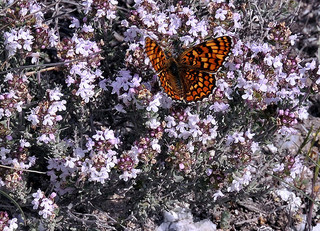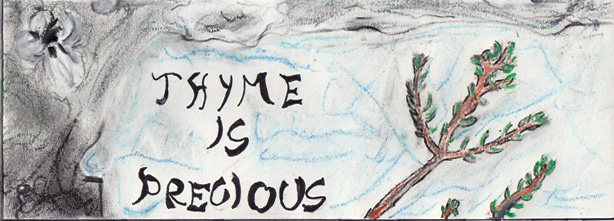Adaptation
Stomata
Exchange of CO2 and O2 is necessary to carry out
photosyntheseis, but water can also escape. To
minimize water loss, stomata are very small and located on the
bottom of the leaf. In warm climate like the
Mediterranean,
stomata remain closed during the day and open at night.
Waxy Cuticle
For plants, one of the challenges is keeping water.
Water is used important in plants. It to keeps the pressure up
in plants to prevent wilting, transports nutrients, and so much
more. To prevent water evaporation, plants have a waxy cuticle.
The cuticle minimizes water loss and adds an extra layer of
protection.
Flowers
Flowers are an adaption of angiosperms used to attract
pollinators. Their shape and color vary to attract certain
pollinators. The prettier flowers will be noticed first and have
a higher chance of being pollinated. Besides being pretty, shape
has another role. The shape can allow easier access to pollen
like in Lamiaceae; the bottom three petals are fused together
making a convenient spot for insects like butterflies land.

Essential Oils
Thymus vulgaris like other members of Lamiaceae produces
essential oils. One of the key features of this family is
essential oils. According to a study by, Essential oils are only
produced in 1% of flowering plants in a significant. Secondary
metabolism is where essential oils are made in thyme. The
essential oil in Thymus vulgaris is thymol. Within Thymus vulgaris, there are 6 different chemotypes. Two of them are
phenolic and the four are non-phenolic.
Essential oils need to be stored in special compartments in
plants. The chemicals components can be harmful to plants. If
they were to leak, photosynthesis could be impaired.
This could result death for the plant. To prevent this, the
essential oils are stored in the surface of plant tissue. In Lamiaceae, there are specialized structures called secretory
hairs. They are modified epidermal hairs on the leaves and stem.
Within these epidermal hairs are glandular trichomes. The
glandular trichome diffuse essential oils out though the cell
wall and cytoplasm to the outside. When the plant is stressed,
essential oils are produced.
Production of essential oils is increased in the summer. The
drier, hotter weather in the summer has better conditions for
oil production. Not only is the oil produced in higher
quantities
in the summer, it is also higher quality. The quality of thymol
is determined by climate and environmental conditionals like
rainfall, sunlight, soil, acidity, altitude & pollination.
How does it get energy?
Return to Home
